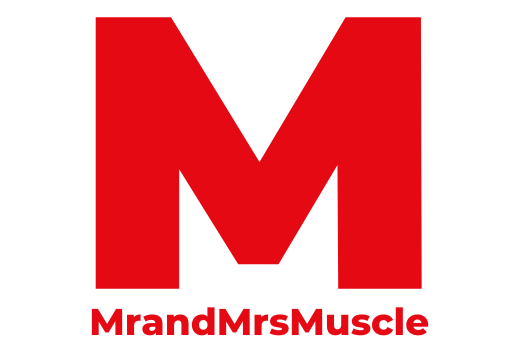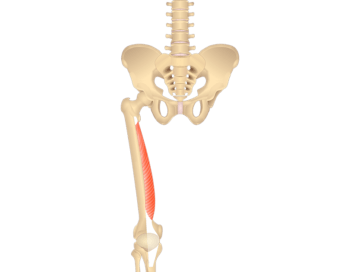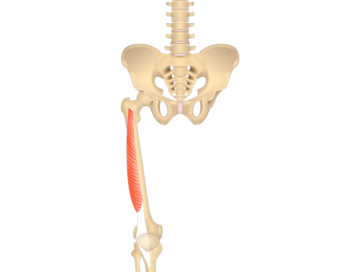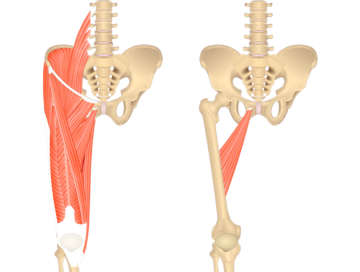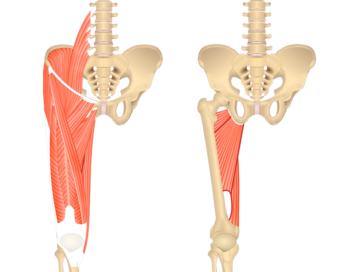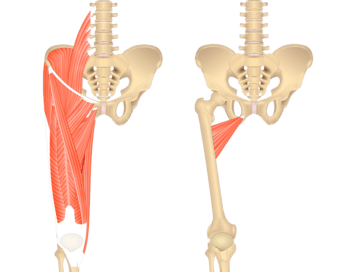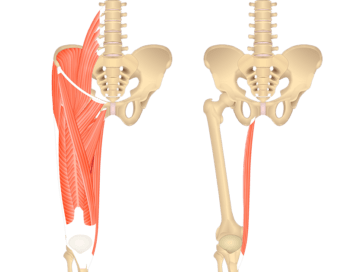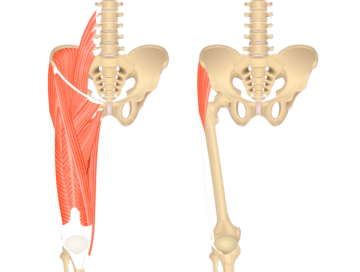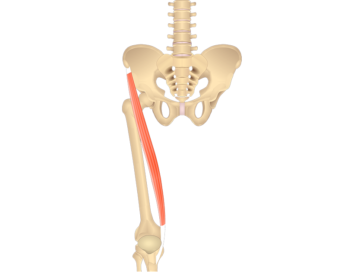Anterior Thigh Muscles
The anterior thigh muscles are composed of three distinctive muscles:
- sartorius
- quadriceps femoris
- articularis genus muscles
The Quadriceps Femoris consists of four individual heads:
- rectus femoris
- vastus medialis
- vastus lateralis
- vastus intermedius
Sartorius Muscle:
Articularis genus:
Along the inner aspect of the thigh, five adductor muscles serve as the main agents in drawing the thigh towards the center:
- adductor longus
- adductor brevis
- adductor magnus
- gracilis
- pectineus
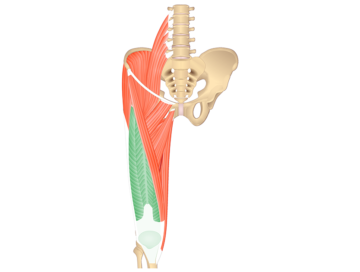
The quadriceps is a group of four muscles located in the anterior thigh. These muscles include the rectus femoris, vastus lateralis, vastus medialis, and vastus intermedius. The primary function of the quadriceps is knee extension, allowing you to straighten your leg
The rectus femoris is one of the four muscles that make up the quadriceps group in the front of the thigh. It is the only quadriceps muscle that crosses both the hip and knee joints. Its main function is to extend the knee, allowing you to straighten your leg, and it also plays a role in hip flexion, helping to lift your leg forward.
The vastus medialis is one of the four muscles that make up the quadriceps group in the front of the thigh. It is located on the inner side of the thigh and works together with the other quadriceps muscles to extend the knee, allowing you to straighten your leg.
The vastus lateralis is one of the four muscles that make up the quadriceps group in the front of the thigh. It is located on the outer side of the thigh and plays a crucial role in knee extension, allowing you to straighten your leg.
The vastus intermedius is one of the four muscles that make up the quadriceps group in the front of the thigh. It lies between the vastus lateralis and vastus medialis muscles. Its primary function is to assist in knee extension, working with the other quadriceps muscles to straighten the leg.
The adductor longus is a muscle located in the inner thigh. Its primary function is to bring the thigh toward the midline of the body, a movement called hip adduction.
The adductor magnus is a large muscle located in the inner thigh. It plays a key role in hip adduction, bringing the thigh toward the midline of the body. Additionally, the adductor magnus also assists in hip extension, allowing you to move your thigh backward, and helps with stabilizing the hip joint during various movements.
The adductor brevis is a muscle located in the inner thigh. It is one of the adductor muscles that plays a primary role in hip adduction, bringing the thigh toward the midline of the body. The adductor brevis also contributes to stabilizing the hip joint during movements.
Quadratus Femoris
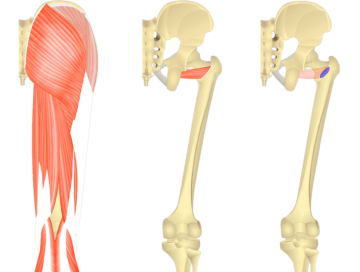
The quadratus femoris is a muscle located in the deep gluteal region of the hip. It plays a key role in hip stabilization and assists in hip extension and external rotation, helping to move the thigh backward and outward. The quadratus femoris muscle is important for maintaining proper posture and balance during various movements.
Iliopsoas Muscle
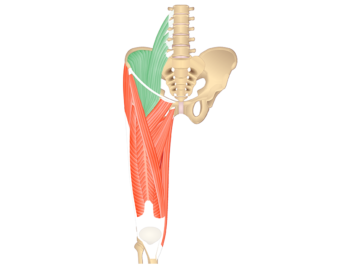
The iliopsoas is a combination of two muscles, the iliacus and psoas major, that work together as a single functional unit. It is located in the hip region and plays a crucial role in hip flexion, allowing you to lift your knee towards your chest. Additionally, the iliopsoas muscle contributes to stabilizing the spine and plays a role in maintaining proper posture and balance.
The pectineus muscle is a small muscle located in the front of the hip, within the inner thigh region. It contributes to hip flexion and hip adduction, allowing you to bring your thigh forward and toward the midline of the body.
The gracilis muscle is a long, slender muscle located in the inner thigh. It plays a key role in hip adduction, bringing the thigh toward the midline of the body.
The tensor fasciae latae is a small muscle located on the outer side of the hip. It plays a crucial role in hip flexion, allowing you to lift your thigh forward. The tensor fasciae latae also aids in hip abduction, which involves moving the thigh away from the midline of the body.
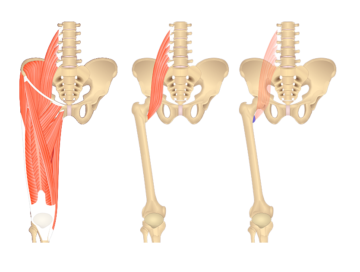
The psoas major is a deep muscle located in the lower back and hip region. It plays a significant role in hip flexion, allowing you to lift your thigh forward. Additionally, the psoas major muscle is involved in stabilizing the spine and pelvis during various movements and is essential for maintaining proper posture and balance.
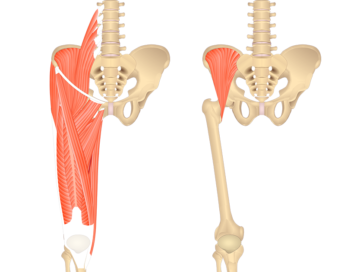
The iliacus is a muscle located in the hip region. It is part of the iliopsoas group, working in conjunction with the psoas major. The iliacus muscle is primarily responsible for hip flexion, allowing you to lift your thigh forward.
Sartorius Muscle
The sartorius is a long, strap-like muscle located in the front of the thigh. It is the longest muscle in the human body. The primary function of the sartorius is to assist in hip flexion and knee flexion, allowing you to bring your thigh forward and bend your knee. It also plays a role in hip abduction, helping to move the thigh outward.
